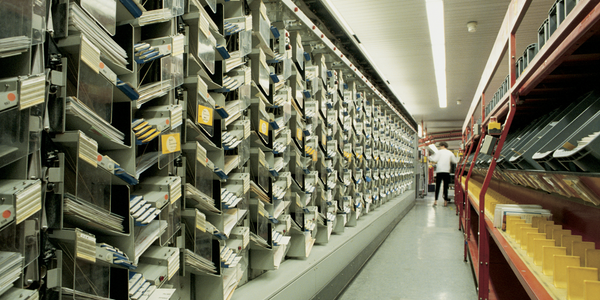Customer Company Size
Large Corporate
Region
- Asia
Country
- Turkey
Product
- QlikView
Tech Stack
- Oracle
- SQL Server
- Excel
- Progress
- Sybase
Implementation Scale
- Enterprise-wide Deployment
Impact Metrics
- Customer Satisfaction
- Productivity Improvements
Technology Category
- Analytics & Modeling - Real Time Analytics
Applicable Functions
- Business Operation
- Sales & Marketing
Use Cases
- Predictive Quality Analytics
- Real-Time Location System (RTLS)
Services
- Data Science Services
About The Customer
DIGITURK, the first and only digital platform in Turkey, has been operating since 1999 and has changed conventional television watching habits. With 170 television, radio and interactive channels, DIGITURK prides itself on its rich content and contains various channels, including domestic and foreign films, sports, documentaries, news, music, children’s entertainment, lifestyle and interactive channels, catering for all types of viewers. As a digital media services provider, DIGITURK strives for customer excellence to enhance the viewer experience across its entire business. With its rapid growth and adoption across Turkey over the last 10 years, DIGITURK identified that its Information Systems infrastructure could be improved to match the development of the business.
The Challenge
DIGITURK, the first and only digital platform in Turkey, identified that its Information Systems infrastructure could be improved to match the development of the business. A corporate reporting structure was required to bring the business together and to allow DIGITURK to continue to provide a consistently high level of service to its 2.5 million customers. The key areas that senior management and departmental heads wanted visibility into included, churn and acquisition, sales, marketing, finance, the call centre, Customer Relations Management, Lig TV and media marketing. As the demand for these applications increased, DIGITURK started realizing that maintenance costs rose for the existing applications and for the dashboards that were in the queue to be developed. This was because they had scattered coding and a lack of standards in the visualization. In addition, this also introduced problems with their data consistency, getting one version of the truth, and below par performance as there was no integration with their corporate reporting infrastructure.
The Solution
DIGITURK launched QlikView with a structure for 50 users; work flow in each department is monitored and managed using ‘management cockpits’. With the QlikView dashboards, DIGITURK users do not only get access to the standard reports but powered by the analysis capabilities they can expand on routine reporting and analysis. Denizlerkurdu explains that a clear challenge in the entire project was establishing the standard reporting definitions according to each department’s requirements. He adds, “Due to the structure of our organisation, we have to form standards which are not only different from department to department but also independent between departments. This project made us open our eyes and put standards and processes in place. We had to understand our business from left to right and bottom to top; QlikView’s data structure and easy associative technology made this a lot more comfortable, combining data from multiple sources. We started to ‘discover’ data as we started to see analyses that had previously not been visible, as we opened up our systems.
Operational Impact

Case Study missing?
Start adding your own!
Register with your work email and create a new case study profile for your business.
Related Case Studies.

Case Study
Leading Tools Manufacturer Transforms Operations with IoT
Stanley Black & Decker required transparency of real-time overall equipment effectiveness and line productivity to reduce production line change over time.The goal was to to improve production to schedule, reduce actual labor costs and understanding the effects of shift changes and resource shifts from line to line.

Case Study
IoT Data Analytics Case Study - Packaging Films Manufacturer
The company manufactures packaging films on made to order or configure to order basis. Every order has a different set of requirements from the product characteristics perspective and hence requires machine’s settings to be adjusted accordingly. If the film quality does not meet the required standards, the degraded quality impacts customer delivery causes customer dissatisfaction and results in lower margins. The biggest challenge was to identify the real root cause and devise a remedy for that.

Case Study
Jaguar Land Rover Speeds Order-to-Cash Cycle
At Jaguar Land Rover, vehicles physically move around the facility for testing, configuration setting, rework and rectification, leading to a longer search time to get each vehicle to its next process facility. The main goal is to minimize the vehicles' dwell time between end of line and the delivery chain which was previously a manually intensive process. Jaguar Land Rover's goal was to build on the success of an earlier RFID project and improve the efficiency of delivering vehicles to meet dealer orders.

Case Study
Improve Postal Mail and Package Delivery Company Efficiency and Service
Postal mail and package delivery company wanted to replace legacy yard management system, increase inbound and outbound yard velocity, improve priority parcel delivery time and accuracy, reduce workload and overtime, reduce driver detention and measure performance and utilization of yard resources.

Case Study
Hospital Management Solution
The Oncology Diagnosis and Treatment Center of Brasov wanted to give patients as much freedom to roam as possible, while at the same time ensuring optimal patient safety and security. The centre was in need of an adequate wireless voice communication and messaging solution that would give patients the confi dence that medical staff is always on call, and reduce stress levels of nurses and doctors when called in case of urgent need.
Case Study
Worker Tracking & Safety Monitoring in Construction
One of the main challenges facing the technology was to create a network within underground tunnels and another was to provide products that can withstand harsh working environment. The team used amplifiers to enhance bandwidth and Litum produced IP67-rated hardware that is durable for harsh working conditions.






